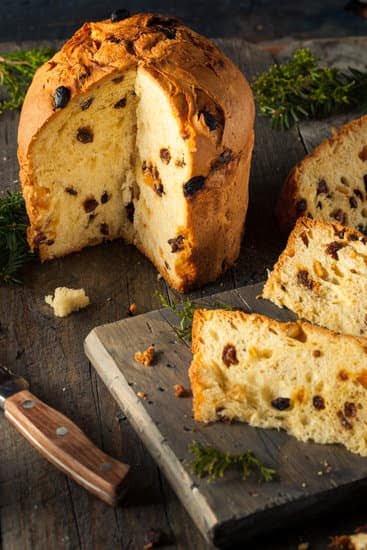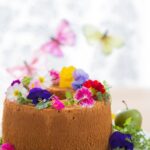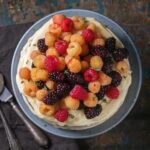Do you want to take your cake decorating skills to the next level? If so, learning how to decorate cake edges is a crucial skill to master.
Decorating the edges of a cake can elevate its visual appeal, adding an extra touch of elegance and creativity. Whether you’re a professional baker or a home baker looking to impress your friends and family, knowing how to decorate cake edges can make a big difference in the overall presentation of your baked creations.
When it comes to decorating cakes, most people focus on the top and sides of the cake, often overlooking the edges. However, the edge of a cake is just as important as any other part, as it provides an opportunity to add depth and dimension to your designs. A beautifully decorated edge can tie the whole look together and make your cakes stand out from the rest.
In this article, we will explore the importance of decorating cake edges and provide you with valuable tips, techniques, and creative ideas for achieving professional-looking results. We’ll also discuss the tools and materials you’ll need, how to prepare your cake for edge decoration, troubleshooting common issues, and much more.
Whether you’re a beginner or experienced baker, there’s always something new to learn when it comes to decorating cake edges. So let’s dive in and take your cake decorating skills to new heights.
Tools and Materials Needed for Decorating Cake Edges
When it comes to decorating cake edges, having the right tools and materials is essential to achieve professional-looking results. Whether you are a beginner or an experienced baker, having the proper equipment can make a big difference in your cake decorating endeavors.
One of the most important tools for decorating cake edges is a good quality offset spatula. This versatile tool allows you to easily spread frosting and smooth out the edges of your cake. Additionally, piping bags and various tips are essential for creating intricate designs and borders on your cakes. Invest in a set of high-quality piping tips to achieve different textures and patterns for your cake edge decorations.
In addition to tools, having the right materials is also crucial for successful cake edge decorations. A sturdy turntable can make it easier to frost and decorate your cakes, allowing you to spin the cake while keeping your hands steady. It’s also important to have a good quality frosting that is easy to work with and holds its shape well. Whether you prefer buttercream, fondant, or ganache, choosing the right frosting for your design is essential.
Lastly, having a clean and organized workspace is important when decorating cake edges. A smooth work surface, parchment paper, and an assortment of food coloring gels or powders can also be valuable additions to your decorating toolkit.
| Tools | Materials |
|---|---|
| Offset Spatula | High-quality Frosting |
| Piping Bags and Tips | Fondant or Ganache |
| Turntable | Parchment Paper |
| Clean Work Surface | Food Coloring Gels/Powders |
By ensuring that you have the necessary tools and materials, you’ll be better equipped to create stunning edge decorations for your cakes. Now that you have an understanding of what you need to get started with decorating cake edges let’s move on to preparing your cake for edge decoration.
Preparing Your Cake for Edge Decoration
Before you can start decorating the edges of your cake, it’s crucial to ensure that your cake is properly prepared. This includes making sure that the cake is level and has a smooth surface for the decorations to adhere to.
Start by trimming the top of your cake to make it level. You can use a long serrated knife or a cake leveler for this. Then, apply a crumb coat of frosting to the entire cake and let it set in the refrigerator for at least 30 minutes. The crumb coat will seal in any loose crumbs and provide a smooth base for your final layer of frosting.
Once the crumb coat has set, you can apply a final layer of frosting to your cake. Make sure that the frosting is spread evenly and smoothly on all sides of the cake. If you’re using fondant or another type of decorative covering, make sure it is rolled out evenly and covers the entire surface of the cake without any wrinkles.
Ensuring that your cake is properly prepared before decorating the edges will help you achieve professional-looking results. It provides a clean canvas for your decorations and ensures that they adhere properly to the cake’s surface.
| Tool/Material | Use |
|---|---|
| Serrated knife or cake leveler | To trim and level the top of the cake |
| Frosting | To apply a crumb coat and final layer on the cake |
| Fondant or decorative covering | To provide a smooth surface for decorations |
Basic Techniques for Decorating Cake Edges
When it comes to decorating cake edges, there are several basic techniques that can be used to achieve different looks and designs. Whether you’re a novice baker or an experienced decorator, mastering these techniques will help take your cake decorating skills to the next level.
Here are some basic techniques for decorating cake edges:
1. Frosting Swirls: This is one of the most common and simple ways to decorate cake edges. Using a piping bag fitted with a star tip, pipe small swirls around the top and bottom edges of the cake. This creates a classic and elegant look that works well for all types of cakes.
2. Chocolate Drips: For a more modern and trendy look, chocolate drips can be used to decorate the edges of the cake. Melted chocolate is drizzled around the edges and allowed to drip down the sides, creating a dramatic and delicious decoration.
3. Sprinkles and Confetti: A fun and colorful way to decorate cake edges is by adding sprinkles or confetti around the sides of the cake. Simply press them gently into the frosting or icing before it sets to add a pop of color and texture.
These are just a few basic techniques for decorating cake edges, but there are endless possibilities for creativity and customization. Experiment with different colors, textures, and flavors to find what works best for your specific design vision.
Advanced Techniques for Decorating Cake Edges
Advanced Piping Techniques
To take your cake decorating to the next level, consider advanced piping techniques such as creating intricate lace designs, delicate floral patterns, or even personalized messages on the edges of your cake. Using a piping bag with a fine tip or a set of decorating tips can help you achieve these detailed and impressive designs. Experiment with different nozzle shapes and sizes to create unique textures and patterns.
Fondant Ruffles and Accents
Using fondant to create ruffles and other decorative accents is another advanced technique for decorating cake edges. Roll out the fondant into thin strips and carefully attach them to the edge of the cake using edible glue or water. You can also use fondant cutters to create intricate shapes and designs to adorn the edges of your cake. With practice and patience, you can master the art of creating stunning fondant embellishments for your cakes.
Edible Painting and Airbrushing
For a truly unique and artistic touch, consider using edible paints or an airbrush kit to decorate the edges of your cake. This advanced technique allows you to add vibrant colors, gradients, and custom designs directly onto the surface of your cake. Whether you want to create a watercolor effect, hand-painted details, or intricate airbrushed patterns, learning how to paint or airbrush your cake edges can elevate your decorating skills to a professional level.
Tips for Achieving Professional-Looking Cake Edge Decorations
Use the Right Tools and Materials
To achieve professional-looking cake edge decorations, it’s important to use the right tools and materials. Invest in high-quality piping bags, tips, and couplers to ensure clean and precise designs. Additionally, having a good offset spatula can help you achieve smooth and flawless edges when frosting your cake.
Practice Consistency
Consistency is key when it comes to achieving professional-looking cake edge decorations. Whether you’re using buttercream, fondant, or ganache, make sure that your consistency is just right. If your frosting is too thick, it will be difficult to work with, while if it’s too thin, your decorations may not hold their shape.
Attention to Detail
Pay attention to the small details when decorating your cake edges. Take your time to ensure that your lines are straight, your piping is consistent, and any fondant or gum paste accents are neatly placed. Additionally, keep an eye out for any air bubbles or imperfections that can detract from the professional appearance of your cake decorations.
Overall, taking the time to master these tips can elevate the look of your cakes and make them appear as if they were done by a professional baker. Preparing well beforehand with proper tools and materials and focusing on consistency and detail will give you outstanding results no matter which edge decoration technique you use.
Creative and Unique Ideas for Decorating Cake Edges
When it comes to decorating cake edges, there are endless creative and unique ideas that can truly elevate the look of your finished product. Whether you’re a beginner or an experienced baker, experimenting with different techniques can add a fun and personal touch to your cakes. Here are some innovative ideas to inspire you in decorating your cake edges:
- Layered Petals: Create a stunning floral effect by piping buttercream or royal icing into layered petal shapes around the edge of your cake. You can use different colors for a vibrant and eye-catching finish.
- Textured Ruffles: Add dimension and flair to your cake edges by using a ruffling technique with fondant or buttercream. This creates a beautiful, textured look that can complement various themes and styles.
- Mirror Glaze Drips: For a modern and sleek design, consider adding mirror glaze drips along the edges of your cake. This technique creates a glossy finish that is sure to wow your guests.
Getting creative with cake edge decorations not only enhances the visual appeal of your dessert but also allows you to showcase your personality and artistic flair. As you experiment with different ideas, don’t be afraid to step out of your comfort zone and try something new. Whether it’s incorporating edible flowers, edible gold leaf, or even hand-painted designs, the possibilities are endless.
Remember that practicing these creative techniques may take some time and patience, so allow yourself room for trial and error. With dedication and practice, you’ll soon master the art of decorating cake edges in unique ways that truly set your creations apart from the rest.
So there you have it – by exploring these creative and unique ideas for decorating cake edges, you’ll be able to add an extra touch of elegance and originality to your confectionery creations. Don’t be afraid to let your imagination run wild – after all, creativity knows no bounds.
Troubleshooting Common Issues When Decorating Cake Edges
When it comes to decorating cake edges, it is not uncommon to encounter some challenges along the way. However, with the right knowledge and techniques, you can easily troubleshoot these common issues and achieve beautiful cake edge decorations. In this section, we will discuss some of the most frequent problems that arise when decorating cake edges and provide solutions on how to overcome them.
One common issue when decorating cake edges is icing that becomes too soft or runny, making it difficult to create clean and precise designs. To avoid this problem, make sure that your icing is at the right consistency before applying it to the cake.
If you find that your icing is too soft, try adding a small amount of powdered sugar until it reaches the desired thickness. Additionally, always work in a cool environment to prevent your icing from melting or becoming too soft.
Another issue many decorators face is uneven or jagged edges on their cakes. This can occur if the cake layers are not properly leveled before decorating. To ensure smooth and even edges, use a long serrated knife or a cake leveler to trim any uneven areas before applying icing. It is also helpful to apply a thin layer of crumb coat before adding the final layer of icing to create a smooth foundation for decorating.
Lastly, air bubbles in the icing can create an unattractive appearance on your cake edges. To prevent this issue, gently tap the sides of the cake with a spatula or scraper while applying the final layer of icing to release any trapped air bubbles. You can also use a toothpick to carefully puncture any remaining air pockets for a flawless finish.
By being aware of these common issues and implementing the recommended solutions, you can confidently master the art of decorating cake edges and achieve professional-looking results every time.
Conclusion
In conclusion, decorating cake edges can truly take your baked creations to the next level. By adding intricate and beautiful designs to the edges of your cakes, you can elevate the overall look and presentation of your dessert.
Whether you are a beginner or an experienced baker, there are numerous techniques that you can experiment with to enhance the appearance of your cakes. From basic piping techniques to more advanced fondant decorations, the possibilities are endless when it comes to decorating cake edges.
As mentioned in the article, it is important to have the right tools and materials on hand when decorating cake edges. Investing in quality piping tips, fondant molds, and edible decorations will make the process much easier and more enjoyable. Additionally, taking the time to properly prepare your cake for edge decoration will ensure that your designs come out clean and professional-looking.
Remember to not be afraid to think outside the box and get creative with your cake edge decorations. From simple floral designs to elaborate patterns, there are countless ways to make your cakes stand out. By practicing different techniques and seeking inspiration from various sources, you can become a pro at decorating cake edges in no time. So go ahead and experiment with different styles – you may just discover a new favorite way to adorn your cakes.
Frequently Asked Questions
How Do You Make Cake Edges Neat?
To make cake edges neat, I use a turntable to smoothly spread the frosting around the cake. Then, I use a bench scraper to smooth out the edges and create a clean, finished look.
What Tip Do You Use for Cake Borders?
When creating cake borders, I typically use a piping bag with a round decorating tip. This allows me to create consistent and precise borders around the top and bottom edges of the cake.
How Do You Cover the Sides of a Cake?
Covering the sides of a cake requires a steady hand and a good amount of frosting. I start by applying an even layer of frosting to the sides, then use a spatula or bench scraper to smooth it out. It’s important to work quickly and carefully to achieve a clean finish without any crumbs showing through the frosting.

Welcome to our cake decorating blog! My name is Destiny Flores, and I am the proud owner of a cake decorating business named Cake Karma. Our mission is to provide delicious, beautiful cakes for all occasions. We specialize in creating custom cakes that are tailored specifically to each customer’s individual needs and tastes.





